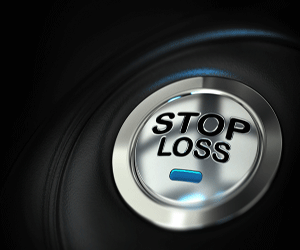For most newcomers to the markets, the phrase “stop-loss” carries an ominous connotation. I am reminded of ransom images and overpaid bank accounts. Both products of the once-promising opportunity failed. However, for veteran traders, stop-loss is not seen as an enemy – it is a powerful tool to prevent financial disaster.
Stop-loss is a Science.
The objective of a stop loss is to limit liability for an open position in the market. If the price moves against the market entry (down to buy, up to sell), the stop loss closes the position at a certain point. So, the key question for active traders is where I should place my stops?
As any market veteran will tell you, knowing how to use a stop loss is a key to maintaining profitability. Of course, this is much more than meets the eye. Practically, you can exit a trade anytime you want, but the “art of stop-loss” is to understand when a trade is over, not just an instant fight.
Here are some of the ways professional traders locate a stop-loss order:
Timing
For many short-term traders, stop loss is determined by time. For example, end-of-day (EOD) stops are used to smooth out a negative position before the close session call. EOD stops eliminate the potential hazard of holding a subsea position through electronic closure.
Technical Tools
There are thousands of ways for technical traders to mark the stop loss area. Fibonacci retracement levels, moving averages, and candlestick patterns are several indicators used to determine when to exit a negative trade.
Price Action
In traders with breakout and momentum, the price action itself is often used to determine where the stop loss should be. Trailing stops are a good example of this methodology because they move with changing price action and are not subject to precise placement.
Market structure
Determining the market structure is nuanced and often differs depending on who you are talking to. Classifying price actions of varying duration in terms of consolidation, trend, or rotation is largely subjective. However, stop losses are often placed above periodic highs, below periodic lows, or within certain trading ranges.
Determining the best stop-loss order location for an individual trade is directly dependent on the strategy you have implemented. Remember that for a protective stop to be effective. It must properly balance risk and reward while still giving the trade a legitimate chance of success. Superiority in this area is a fine line – if the stop is too tight, it can hit; too loose, and account drawdowns can become severe.
Stop Loss Psychology
If you have any experience as an active trader, then you are familiar with the frustration of exiting a position in the red. It can be an emotional event that symbolizes both defeat and loss of capital. In many cases, the market reverses soon after a position is closed – presumably rubbing salt into your wounds.
Unfortunately, there is no alternative to avoid this scenario. If you are going to trade, you will sometimes lose money. However, your ideal stop loss placement could be anything you want, and if you’re profitable, that’s right.
New to Forex trading? start your trading now.
– Open an ECN Account
– download Forex platform
– Lean Forex basics
– Forex deposit Methods
– Forex Promotions
– Forex Spreads
– STP Forex


